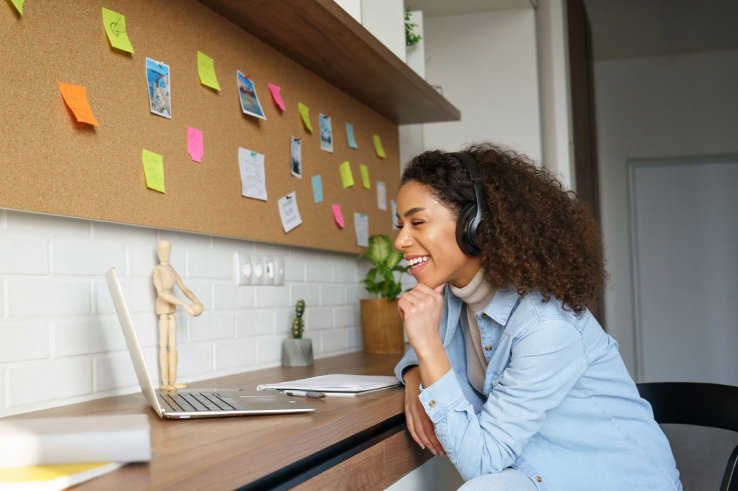
Class is the next generation virtual classroom for K-12, higher education, government agencies, and the workplace. Contact us today to schedule your live demo and see Class in action.

Class is the next generation virtual classroom for K-12, higher education, government agencies, and the workplace. Contact us today to schedule your live demo and see Class in action.

Zoom, the popular meeting app that has become the go-to resource for connecting with others during the pandemic, just released some new features that students and teachers can use to add some fun and engagement to their online interactions and Zoom classroom.
Here we take a look at some of these Zoom updates and features, and offer ideas on how students and teachers using Zoom might incorporate them into their classroom activities.
There are a variety of new classroom management options that both students and teachers using Zoom will find helpful for making their virtual learning interactions as seamless and productive as possible.
Zoom has made it easier to schedule meetings from just about anywhere—your desktop client, Zoom’s web portal, calendar plugins and even your mobile device. Just schedule a meeting as you typically would and then click “Make it a Zoom Meeting” to automatically add Zoom meeting details to your invitation. Through the calendar function, you also can schedule an automatic reminder to go out to participants at a specific time before a meeting will begin.
For teachers used to seeing students lined up in desks and sitting in a certain place during class time, custom gallery view allows the ability to position participants in a specific place—and lock them into that position. This way the images won’t bounce around as different people are talking, which can be distracting for instructors. Just click and drag the images to the position you want them and they’ll stay in place until released.
With permission, all participants can do this themselves to arrange their own gallery views in ways that work best for them. Zoom currently shows up to 49 individuals in gallery view. You might organize images to approximate a classroom, or move images around to remind you to call on students who haven’t spoken much so they’re top of mind and you remember to call on them, for instance.
By setting up a personal meeting room, or multiple rooms, you can customize each room to meet different needs related to the subject and students. For instance, set up individual personal meeting rooms for each of your classes, using appropriate backgrounds for each.
While in class, use Zoom’s multi-pin and multi-spotlight options to pin or spotlight up to nine other participants. This can be a good way to put the focus on project team members, for instance. You may also choose to give participants the ability to do the same.
Teachers may also want to use a spotlight to highlight themselves when speaking—or you might choose to pin yourself to the front of the Zoom classroom.
Zoom has some new features that can also help with community building and engagement.
One challenge for teachers using Zoom has been creating and maintaining engagement with students. Zoom has introduced some new options that can help teachers do this in fun ways.
Currently in beta, Zoom’s studio effects offer users the ability to apply various characteristics to their images. This is very similar to what many are familiar with in Snapchat, for instance. Add bushy eyebrows, a mustache or beard, lip colors, etc., to convey your personality or to just have fun.
Teachers might incorporate this feature into their lessons by, for example, asking students to select visual effects that mimic a character from history, or from a favorite book or movie. The visual effects selected will move with your image so, if you’re wearing a pirate’s hat, for instance, it will move with you as you’re moving your head.
This may not be an option you want to offer students all of the time, but could be a fun change of pace for a Friday afternoon, or after a particularly challenging day or assignment.
Breakout rooms provide an opportunity for students to work in small groups and now they’re able to form groups on their own for impromptu discussions or teamwork. And, with permission, they’re able to go in and out of groups to interact with different people—breakout rooms where teams may be making demonstrations of some kind, for instance.
With permission from the host, participants in Zoom meetings are able to, for instance, allow the class to give reactions – like a thumbs up, or clapping hands, for instance—while the teacher, or another class member, is speaking. Annotate and closed caption options also can be used by the host, guest speakers or moderators, or attendees based on permissions given. This offers a great way to both create engagement and get real-time feedback from participants.
These are some of the new settings we thought offered opportunities for teachers managing virtual classrooms and engaging students, but there are many more. We encourage you to take some time to learn about, and practice using, these and other features that Zoom offers to make your virtual classroom experiences as engaging and productive as possible for your students—and for you.

Class is the next generation virtual classroom for K-12, higher education, government agencies, and the workplace. Contact us today to schedule your live demo and see Class in action.

Class is the next generation virtual classroom for K-12, higher education, government agencies, and the workplace. Contact us today to schedule your live demo and see Class in action.
Get our insights, tips, and best practices delivered to your inbox

Sign up for a product demo today to learn how Class’s virtual classroom powers digital transformation at your organization.

Features
Products
Integrations